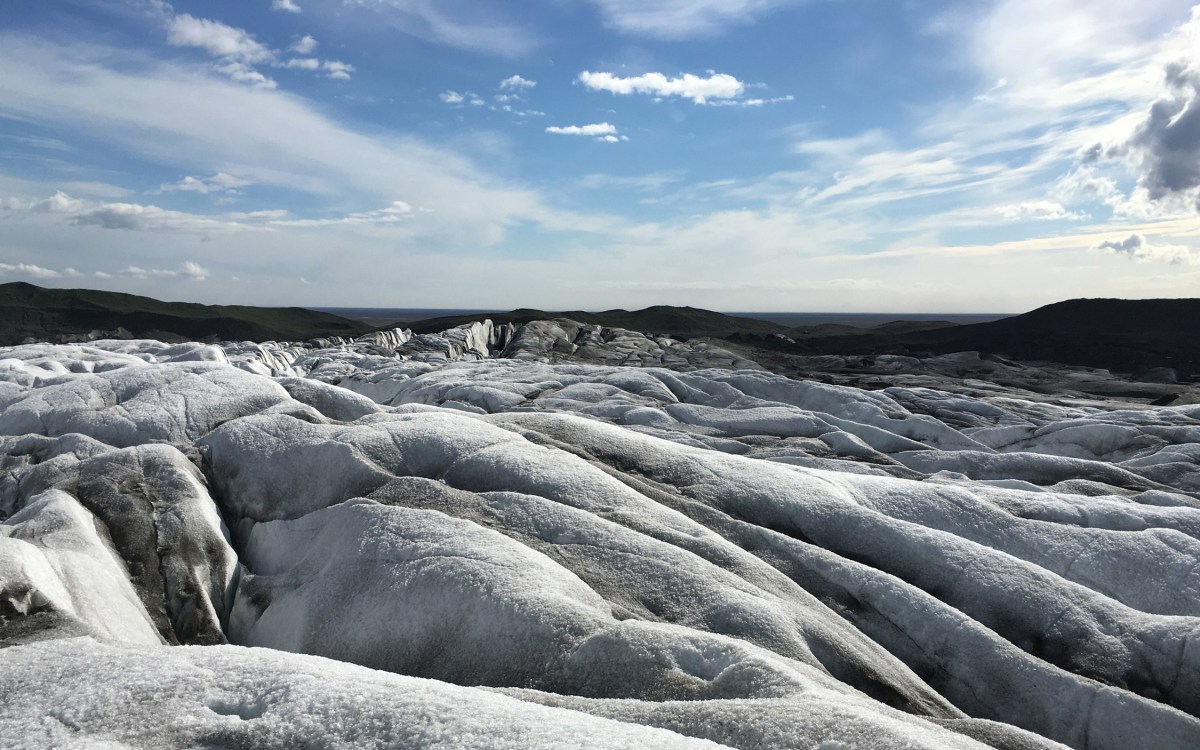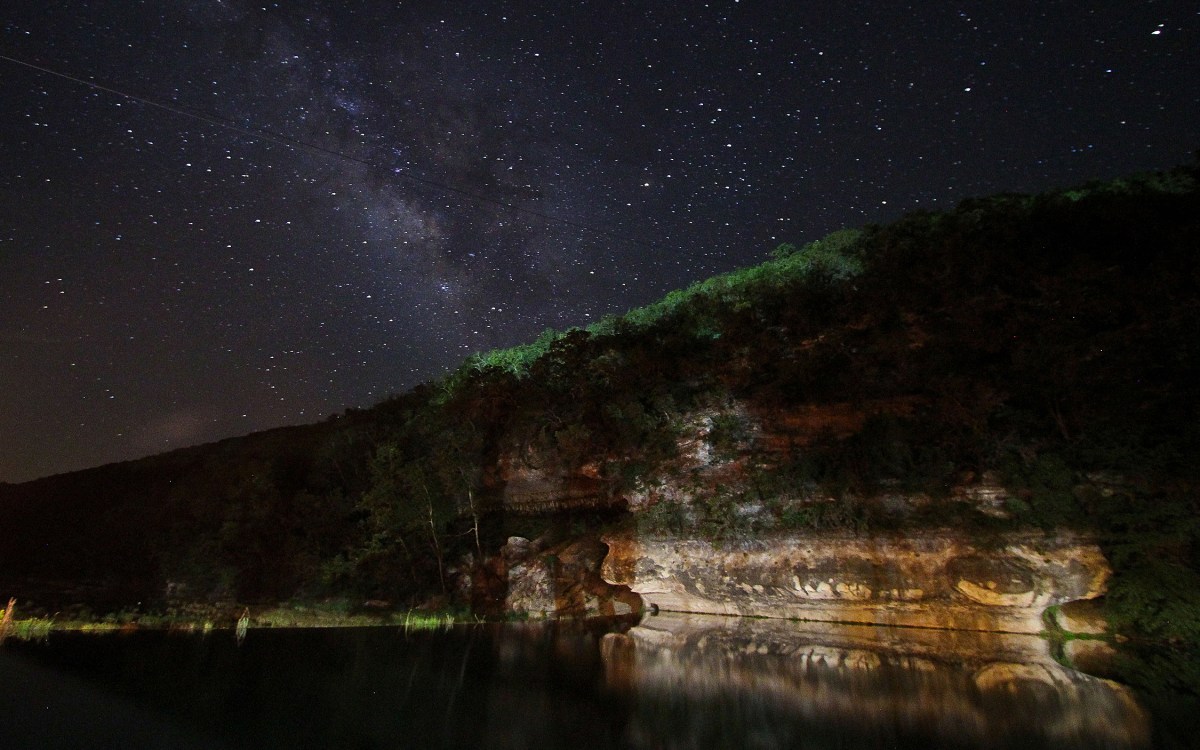Warning: Warming ahead
Video by Kai-Jae Wang/Harvard Staff
Science Center installation aims to share data, urge action against climate change
For many, it’s not news that human activity has dramatically increased average temperatures across the globe. But few people are directly confronted with evidence of it as they walk to class or the office.
“Warming Warning,” a new collaborative public art project on Harvard’s Science Center Plaza, aims to do just that.
The stunning piece, on view through Dec. 7, is the result of a unique collaboration between designer and artist David Buckley Borden, M.L.A. ’11, a Harvard Forest Fellow and Harvard Graduate School of Design alumnus, and Aaron Ellison, senior ecologist at the forest.
According to Borden and Ellison, “Warming Warning” was envisioned not just as a way to communicate global climate data, but also as a mechanism for spurring conversation, on and off campus, about direct action on climate change. To complement the installation, they organized a series of art talks addressing individual action. The exhibit’s launch on Oct. 22 in the Cabot Science Library included students, staff, and faculty at Harvard College, Office for Sustainability, Harvard Forest, T.H. Chan School of Public Health, Graduate School of Education, the libraries, Graduate School of Design, and Harvard Climate Leaders Program for Professional Students, who discussed what they can do to tackle climate change, regardless of their area of scholarship or role at the University or in the community.
“Sometimes we forget the power of one-on-one conversation,” said Borden. “A lot of people are open to these ideas, but they may not have the toolset at their fingertips for how to be better stewards.”
The piece uses painted triangles made of timber sustainably harvested and milled by the Harvard Forest woods crew. On one side, the dramatic rise in in global average temperature since 1880 is highlighted as a white-to-red heat-gradient. The other side illustrates four different scenarios of future carbon dioxide emissions as detailed by the Intergovernmental Panel on Climate Change. The lines represent paths to limit temperature increase by transitioning to a fossil fuel-free future, or maintain status quo and create an increasingly warm and uninhabitable planet.
The sculpture is designed to play on perspective: of time, displaying temperature change over decades, and of place, as its aspect changes depending on where the visitor is standing, the sun’s location, or current weather conditions.

Photos by Kris Snibbe/Harvard Staff Photographer
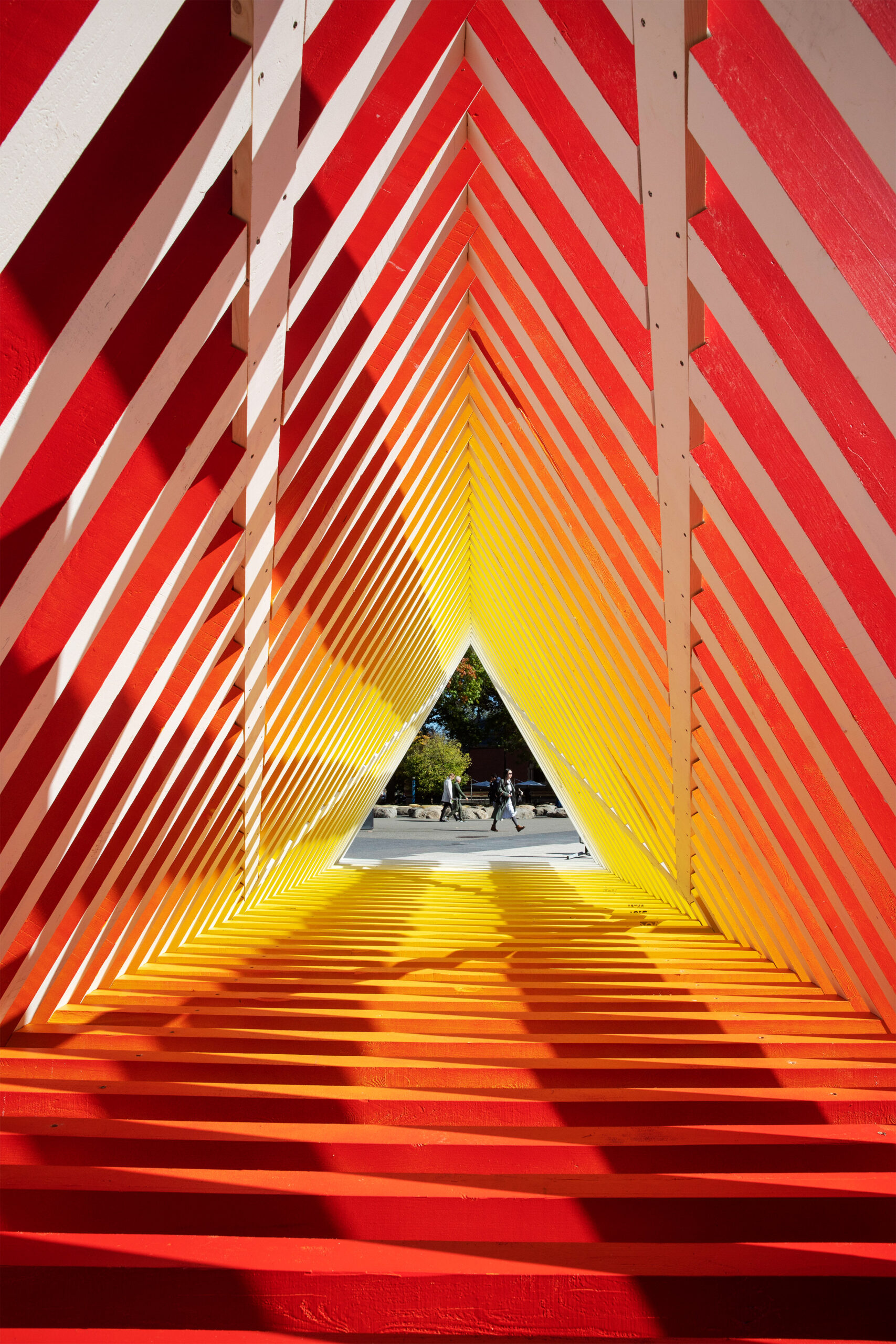
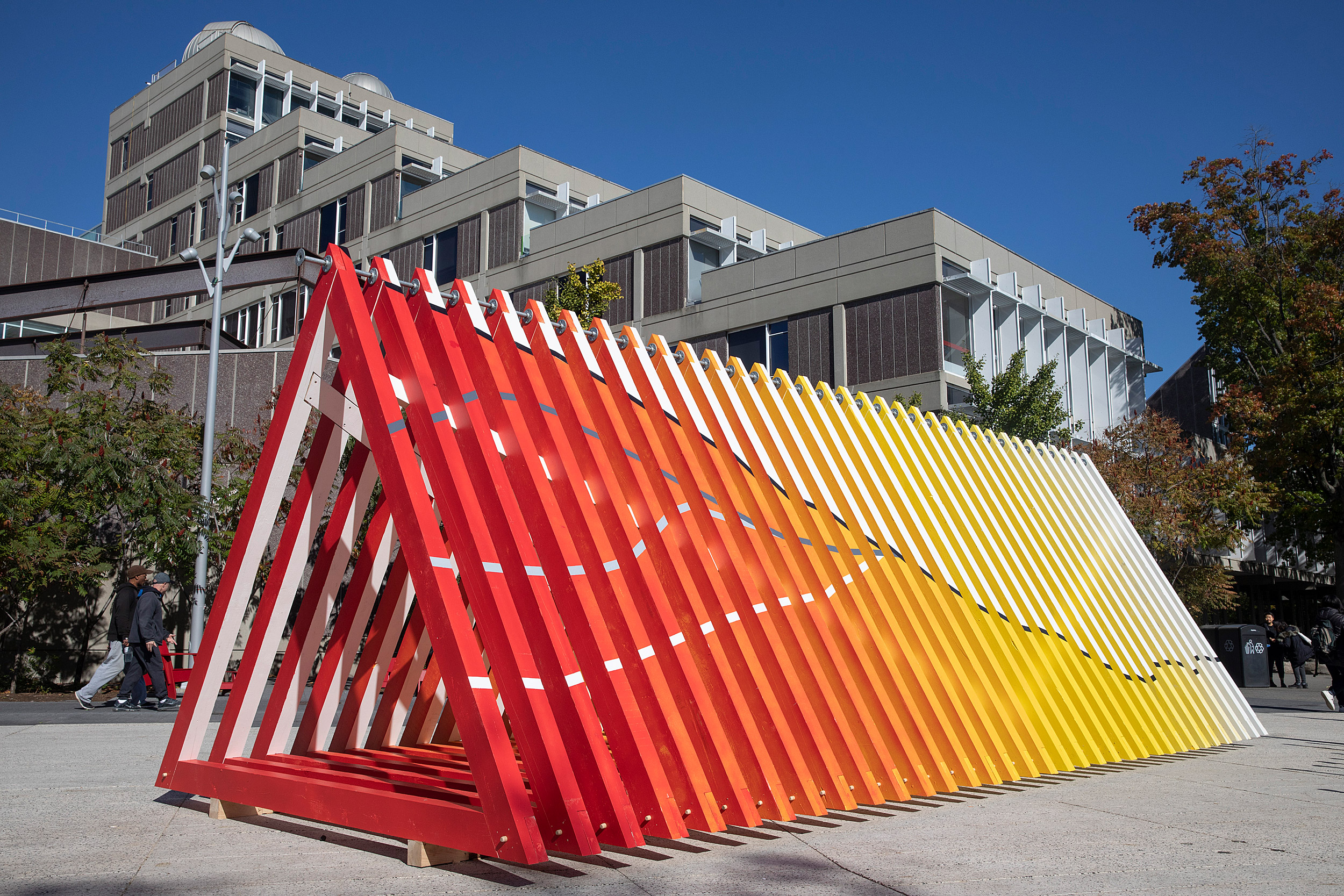
“As you walk across the sculpture you can think about questions of climate change and what we can do about that from a variety of angles and perspectives.”
Aaron Ellison
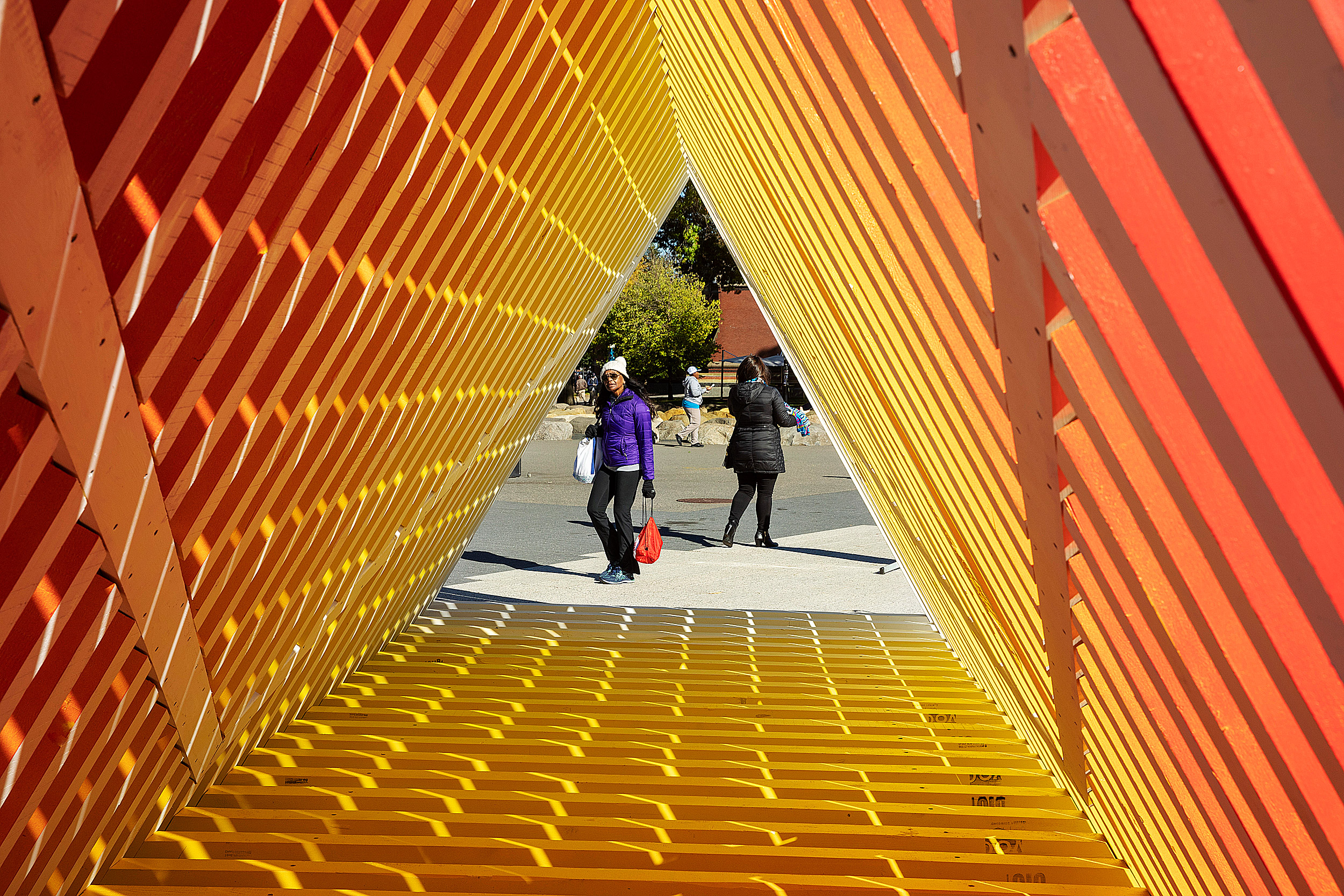
“As you walk across the sculpture you can think about questions of climate change and what we can do about that from a variety of angles and perspectives,” said Ellison. “This is not a problem for the next generation. It’s a problem for all of us right now.”
“The Harvard Forest is excited about this artistic collaboration as it helps highlight major insights drawn from our diverse studies across the New England landscape. Today, the region’s forests are growing rapidly and offsetting up to a quarter of the region’s carbon dioxide emissions,” said David Foster, the forest’s director. “Given the importance of this natural landscape for climate mitigation, flood control, recreation, and habitat, it is critical that we all join together to conserve it and other forested areas into the future.”
“Warming Warning” was designed to leave space for more triangles. Nine wood timbers were stacked together to make a bench that “suggests each person’s role in the narrative of unfolding climate change.” The bench was left white to prompt passersby to sit for a moment and consider how they can color the future by individual and collective action to limit climate change.
“Warming Warning” was made possible due to a unique partnership between the Harvard Forest, Harvard Common Spaces, and the Office for Sustainability, in part to draw attention to the University’s ambitious, science-based goal to be fossil fuel-neutral by 2026 and fossil fuel-free by 2050.
“The art sculpture should serve as a reminder that each of us, including landowners of the region’s forests like Harvard University, can make a personal difference in combating global change,” Foster said.



